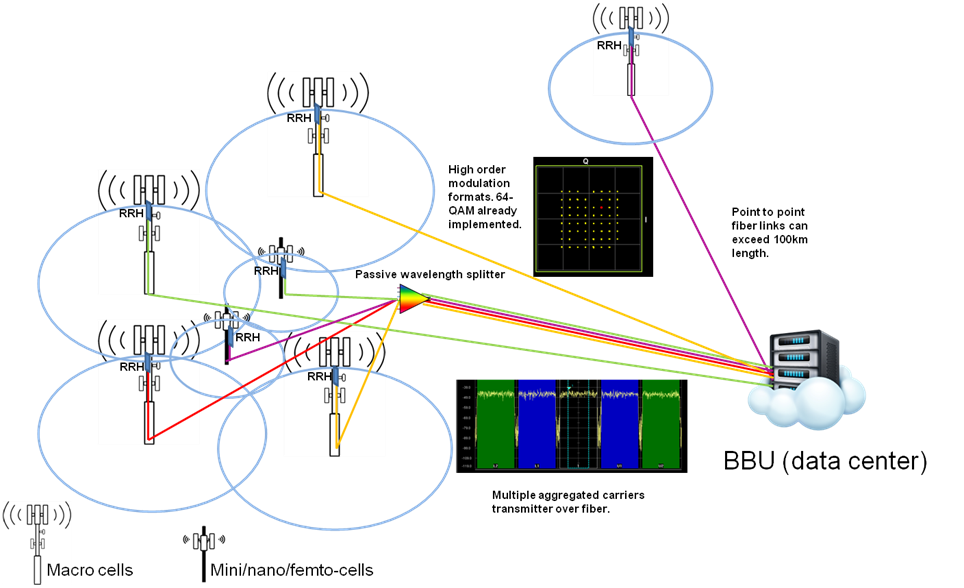 5G mobile networks, as defined by the Next Generation Mobile Networks Alliance, are expected to deliver data rates of tens of megabits per second for tens of thousands of users; data rates of 100 megabits per second for metropolitan areas; 1 Gb per second simultaneously to many workers on the same office floor; with significantly reduced latency compared to LTE. Achieving these goals require a radically different approach to Fronthaul implementation – connections between the aggregated Base Band Unit (BBU) centers and Remote Radio Heads (RRH).
5G mobile networks, as defined by the Next Generation Mobile Networks Alliance, are expected to deliver data rates of tens of megabits per second for tens of thousands of users; data rates of 100 megabits per second for metropolitan areas; 1 Gb per second simultaneously to many workers on the same office floor; with significantly reduced latency compared to LTE. Achieving these goals require a radically different approach to Fronthaul implementation – connections between the aggregated Base Band Unit (BBU) centers and Remote Radio Heads (RRH).
Current CPRI based fronthaul can’t scale to the data rates, connection distances and reduced latency required for Cloud RAN implementation. There are multiple current initiatives to redefine fronthaul, by redefining various functional splits between RRH and BBU, but none of them actually addresses the root of the problem – high spectral efficiency modulation scheme such as OFDM is transported between BBU and RRH by low order modulation signaling.
APIC offers radically simple solution to 5G C-RAN Fronthaul – directly transmit between BBU and RRH high order modulated OFDM (FBMC,…) signals optically over fiber with no intermediate conversion to lower order digital modulation.
Figure 1 shows notional 5G C-RAN Fronthaul implemented with direct point to point and WDM PON topology for direct distribution of OFDM signals over fiber.

The key to achieving this is to use optical links with very low noise and very high linearity.
Using its ultra low noise laser platform, APIC developed a transceiver for the 500MHz to 6GHz range with very high linearity that allows direct transmission of Advanced LTE signals in their native format. Initial prototype test results can be seen in the following white paper. Results show successful transmission of 5 aggregated 20 MHz carriers with 64QAM OFDM modulation using standard E-ULTRA test model 3.1 over a distance 70km. Work is ongoing for the second generation of APIC transceivers that will further enhance the link linearity and allow improved EVM, ACLR and increased link reach. APIC prototypes for customer evaluation will be available in Dec 2017.
Direct transmission of 5G wireless signals over optical fiber is the best way to eliminate bandwidth, latency and escalating costs associated with complicated, power hungry low modulation order digital solutions such as CPRI/OBSAI and its derivatives.
Additional Information
Click the links below to learn more:
